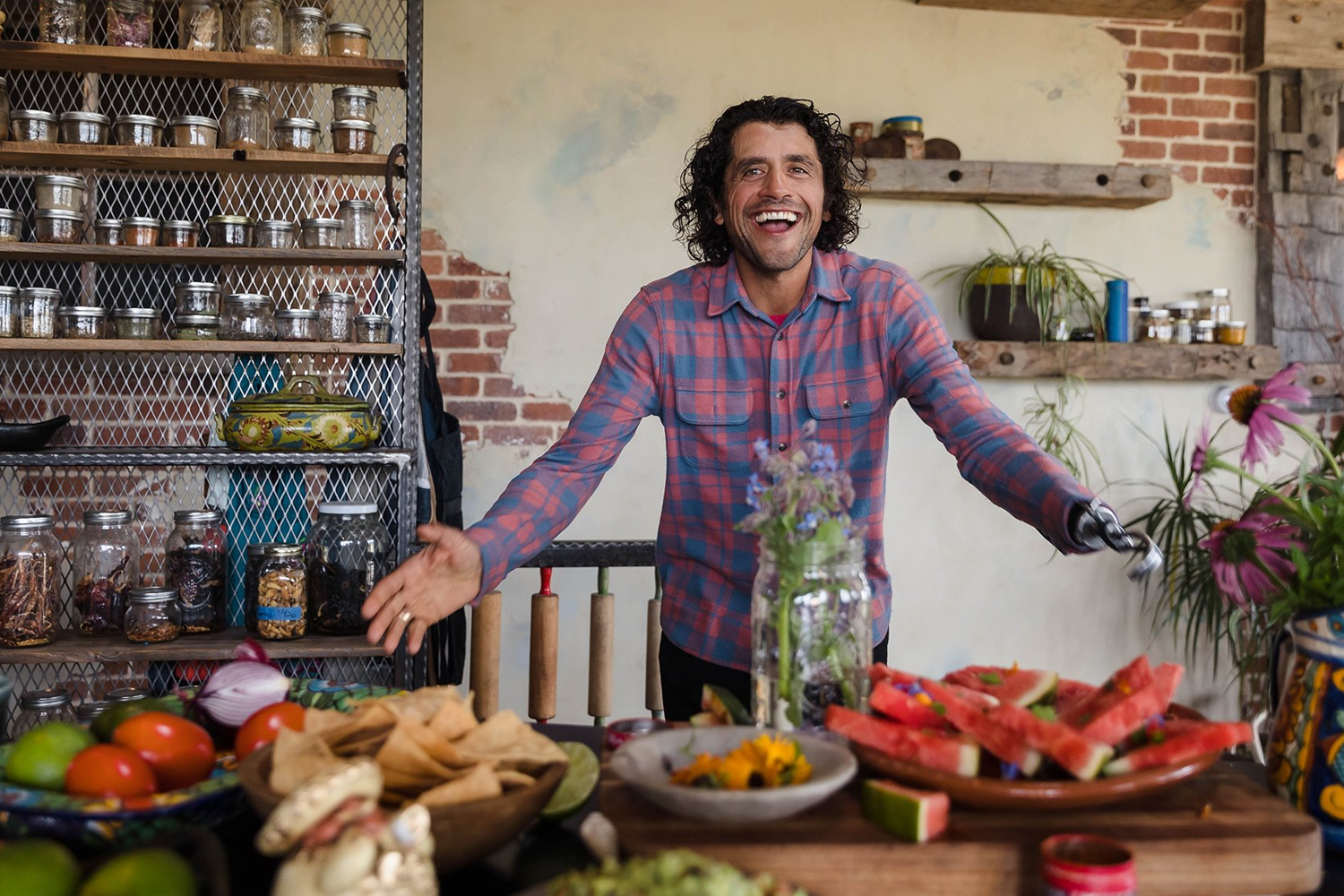
When we think of mountain men, we tend to think of rugged and self-sufficient folks who live off of the land. And while that’s mostly accurate, it’s also 2024, and the definition has evolved. Today’s mountain man is personified by chef Eduardo Garcia, who combines culinary expertise and the right cooking tools with an adventurous attitude and focus on the environment.
Garcia has put in some shifts. He’s done everything from cooking on yachts to delivering motivational speeches. He’s also the host of Big Sky Kitchen, now two seasons deep. The show focuses on outdoor cooking and the many joys of preparing and eating food in the context of nature.
And that’s not all. He’s the former prep cook of Chico Hot Springs in Paradise Valley, Montana, and is the founder of Montana Mex. Known as the “bionic chef,” Garcia sports a prosthetic left arm in the wake of a hunting accident. He’s most recently teamed up with Le Creuset for a collection of tools fit for the off-the-grid chef.
With camping season upon us and nothing quite as satisfying as a good al fresco dining experience, we reached out to the seasoned chef for some advice on cooking like a real mountain man.
“The core satisfaction I feel when cooking over a fire is that of childlike amusement stirred together with sincere alchemy,” says Garcia. “To work with fire and food all at once is simply magical and ancient. Both takeaways that are deeply built into my psyche and sense of being.”
Outdoor cooking tips

“Cooking over a fire takes more time than imagined,” Garcia says. “Knowing this, I often encourage those new to fire cookery to simply allow more time to play in this space and celebrate the unknown and unexpected.”
Go with a slow and low mentality and put what you’re cooking with front and center. “I would encourage home cooks and outdoor enthusiasts alike to consider outdoor cooking as a simplified way to focus on the ingredients being celebrated as they are,” he says. “In practice, this could be roasting whole vegetables, whole fish, or meats on the bone or with skin on. I find these considerations to bring deeper flavor and integrity to my outdoor meals.”
Here are some useful tools Garcia recommends having along for the culinary journey:
- Insulated gloves
- Small shover for coals and fire
- Headlamp
- A good cast iron skillet
And here are some ingredients he suggests bringing:
- Quality sea salt
- All-purpose seasoning blend
- An appropriate fat (such as leaf lard, butter, or EVOO)
- Bar of chocolate
“With a good salt and a healthy fat, I can approach any dish be it completely wild or purchased and feel confident about creating a dish in any environment,” Garcia says. “Oh, a big bar of chocolate is also a power move that isn’t bad to have in your pocket should weather, unforeseen issues, or any other natural scenario cause a bump in your plans. A sweet treat will always buy some time and heal some bruises.”
Simple ways to elevate outdoor cooking

Dining while camping does not have to be a mediocre experience, nor should it be. But that does not mean you have to go way out of your way to make something delicious.
“With a small amount of attention and invested effort upfront, I have witnessed so many—including myself in my earlier years—come to enjoy and appreciate outdoor campfire-cooked meals to the same degree, if not more than traditional indoor cooking,” he says.
A little presentation, for example, can go a long way. “Endeavor to style your camp table with naturally found items like a unique rock or an interesting collection of shells or pinecones,” he says. “Paying attention to these details accents the meal with a story of how it has come to be.”
And then there are all the great natural nibbles around you, not to mention the scenery. “Perhaps begin your foraging education with a common wild edible like dandelion to add to a salad or stir-fry or incorporate nightfall and stargazing as an accompaniment to dessert as a part of the experience,” he says. “In this way, we create a food experience that is hands-on, creative, and for my family, what has now become a beloved way to enjoy and share a meal.”
Garcia’s favorite things to make include fire-grilled oyster mushroom tacos. He roasts whole onions on a grill basket on the side and uses an outdoor pizza pan to warm multiple tortillas.
On regenerative farming

The chef life is intense and serves as the impetus for a new and stainable project for Garcia. “On the heels of burning out as an industry chef I started a small regenerative farm that I operate with my wife as a prescription towards maintaining a healthy relationship to my career in food,” he says.
“We host family, friends, and community on our farm as a way to share our experience educationally,” he says. “This year, we also launched a live cooking class called The Hungry Life from the farm kitchen. Our goal is to use the class as an experiential cook along where I can share culinary methodology paired with regenerative practice and thereby highlight how food is an active integral relationship to ourselves and not just what we eat.”
Check out the link to Garcia’s show above for some of his great outdoor food recipes. And while you’re at it, check out our guides on cooking over a campfire and wild game cooking with Andrew Zimmern. We also have the best food shows to keep you inspired when it comes to cooking.


